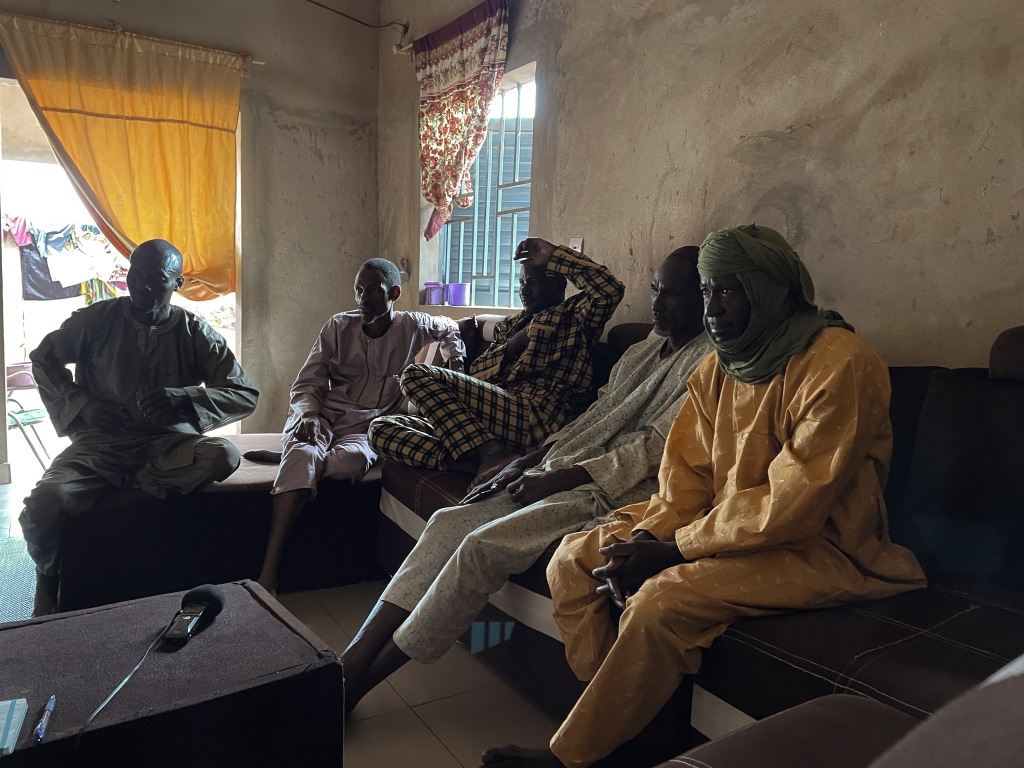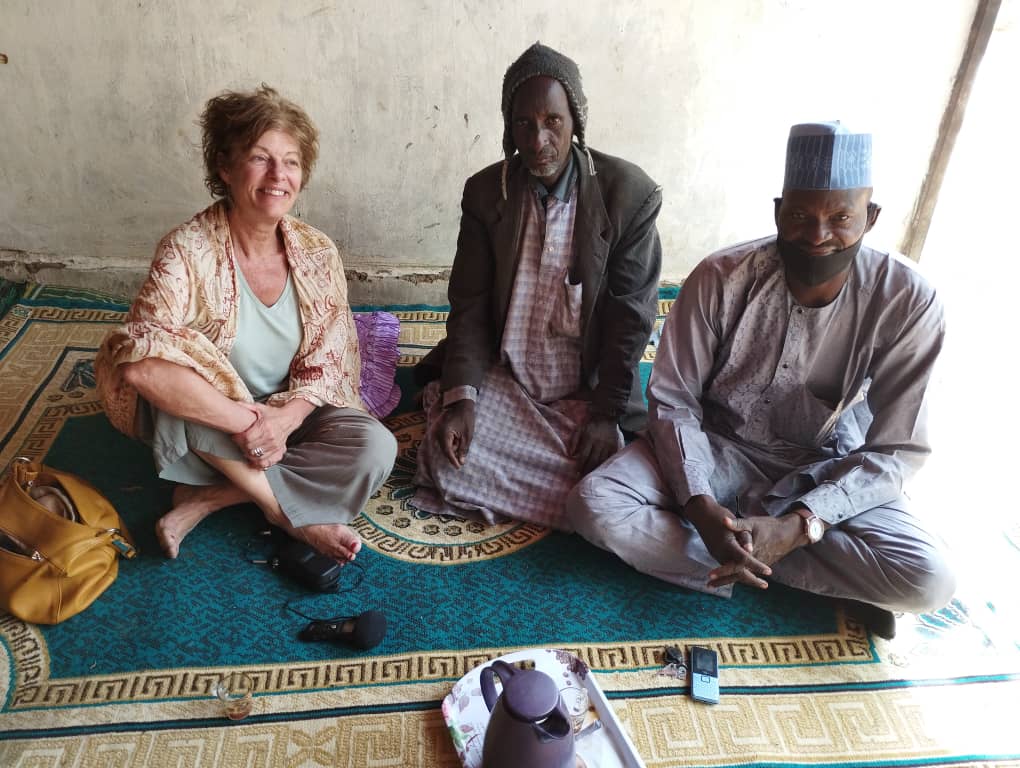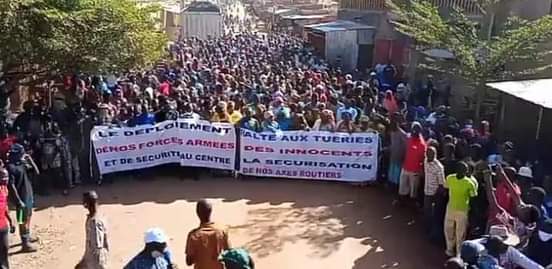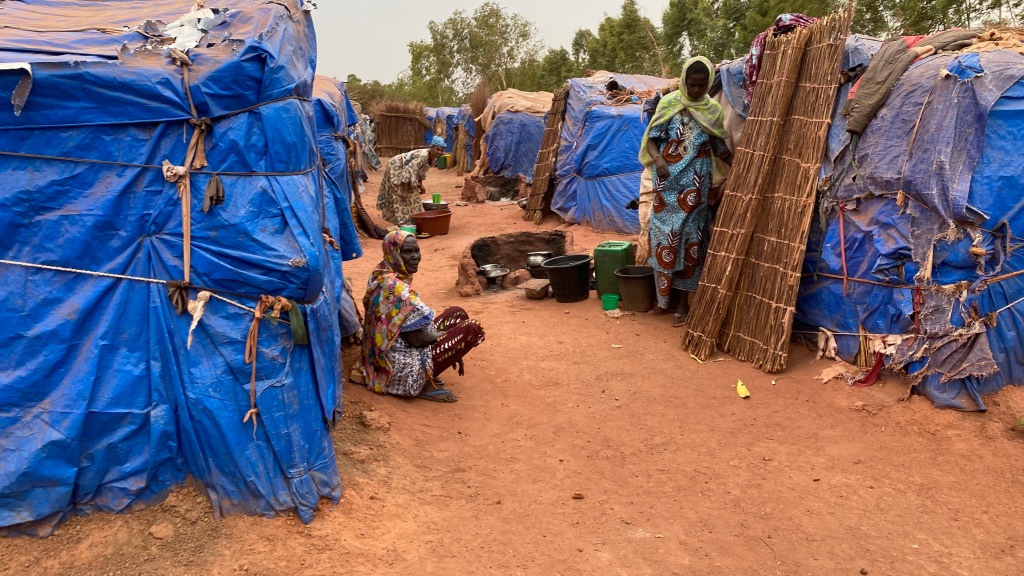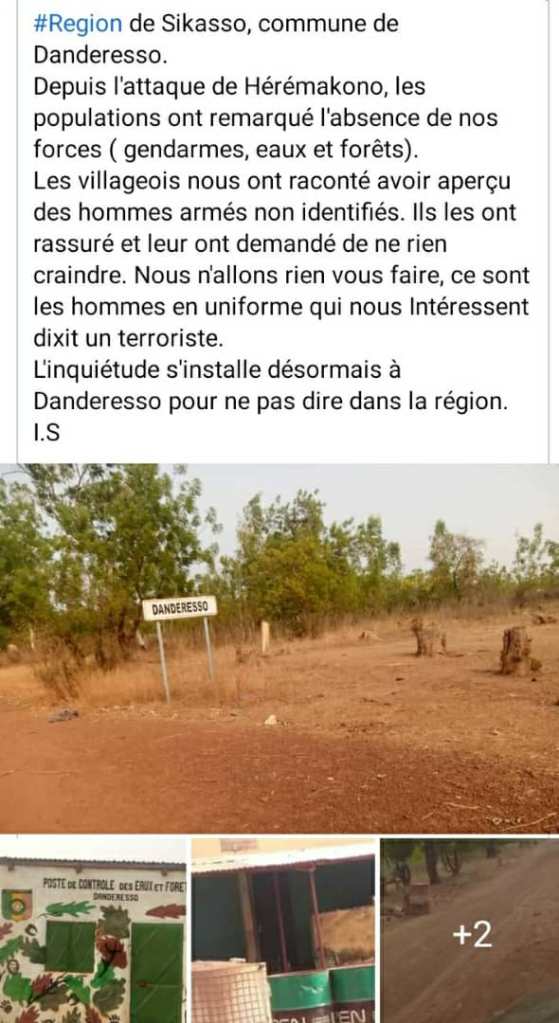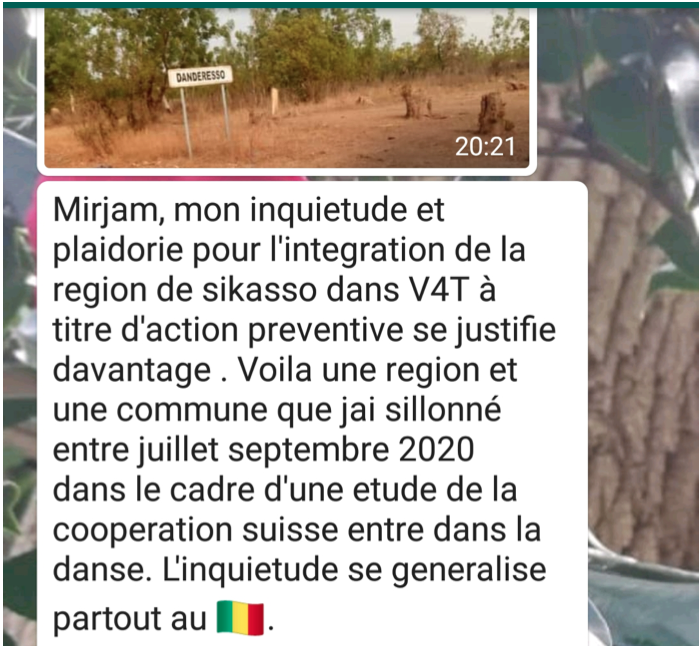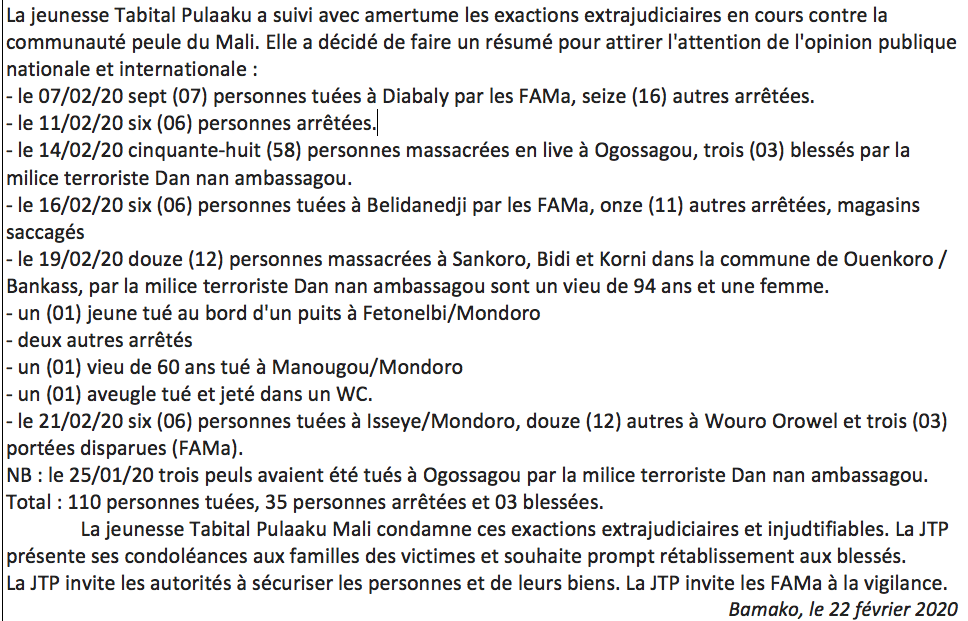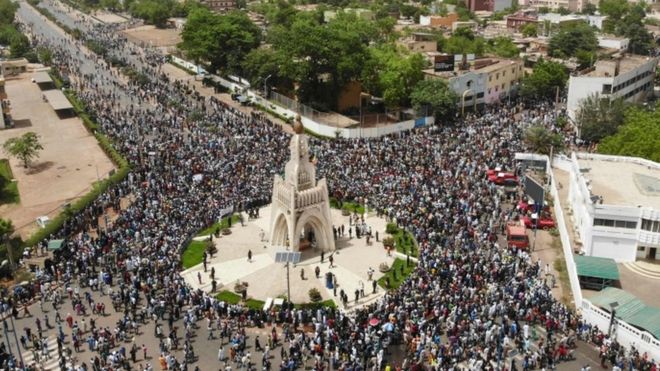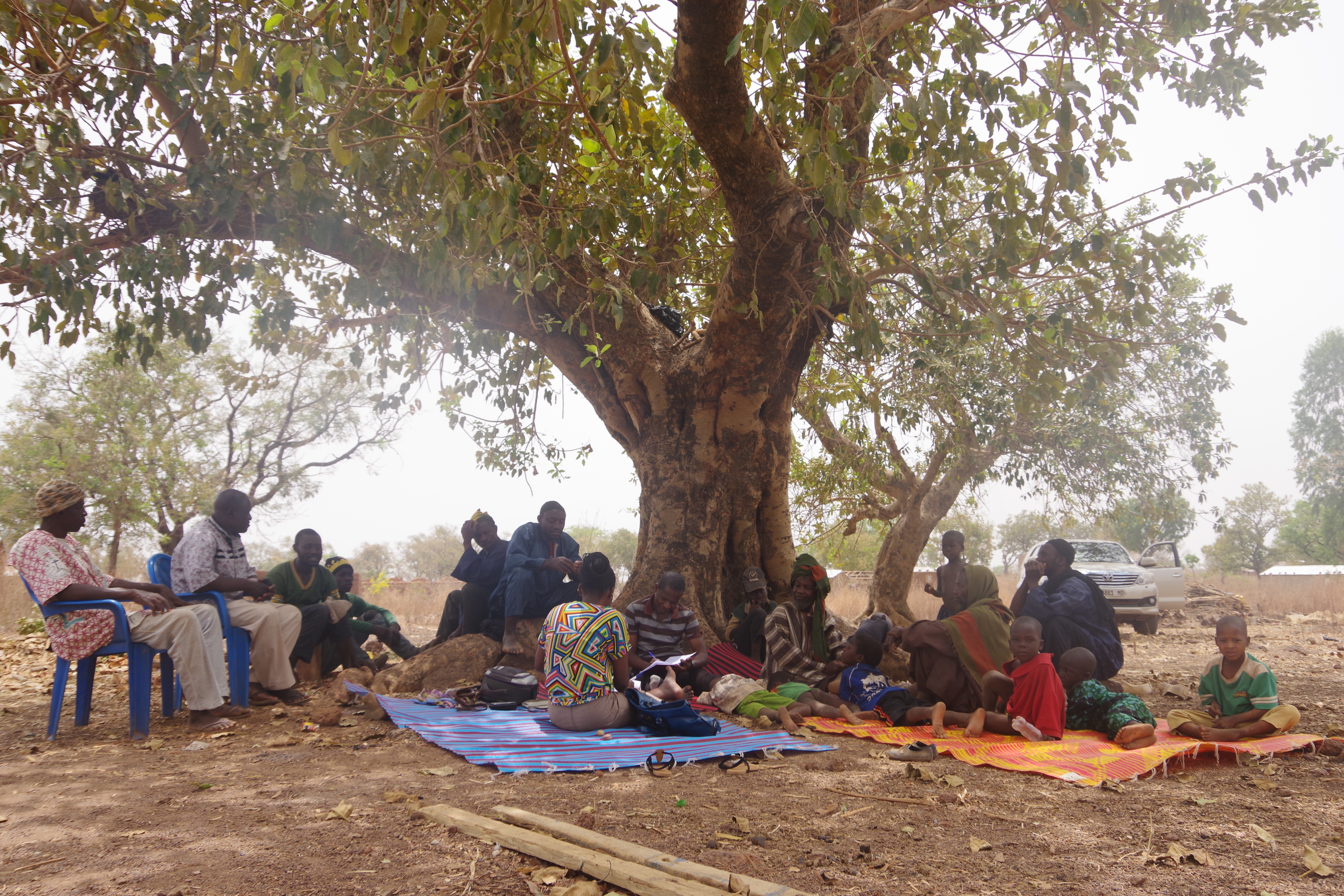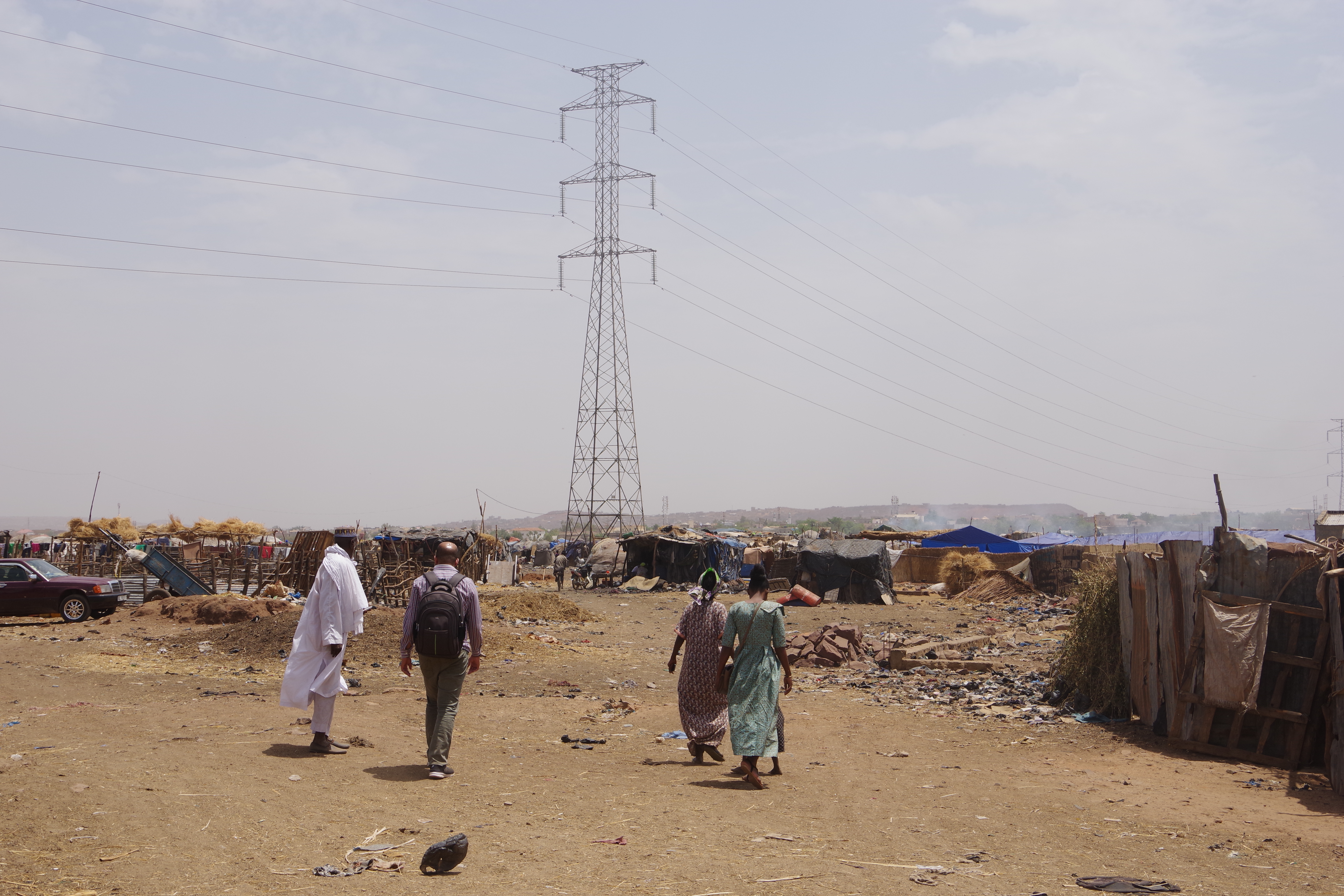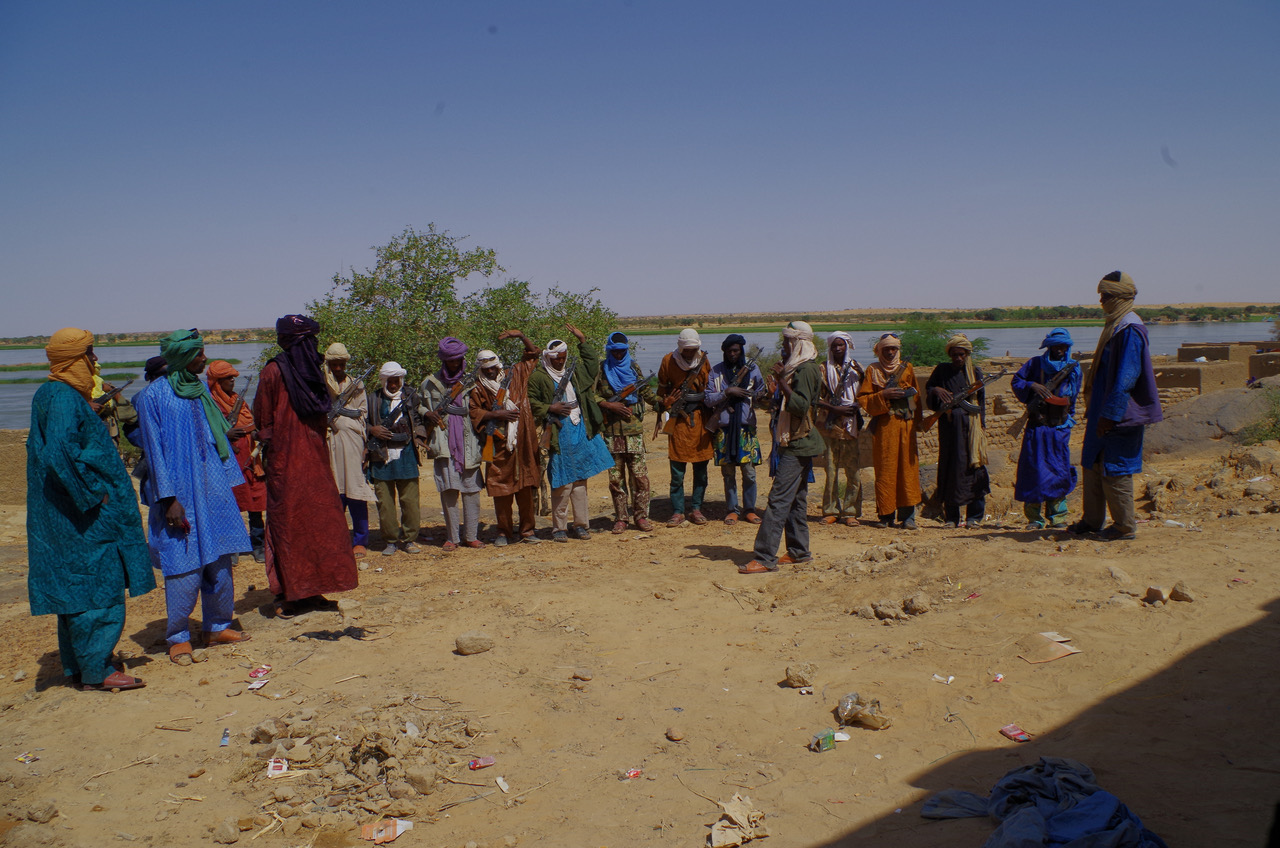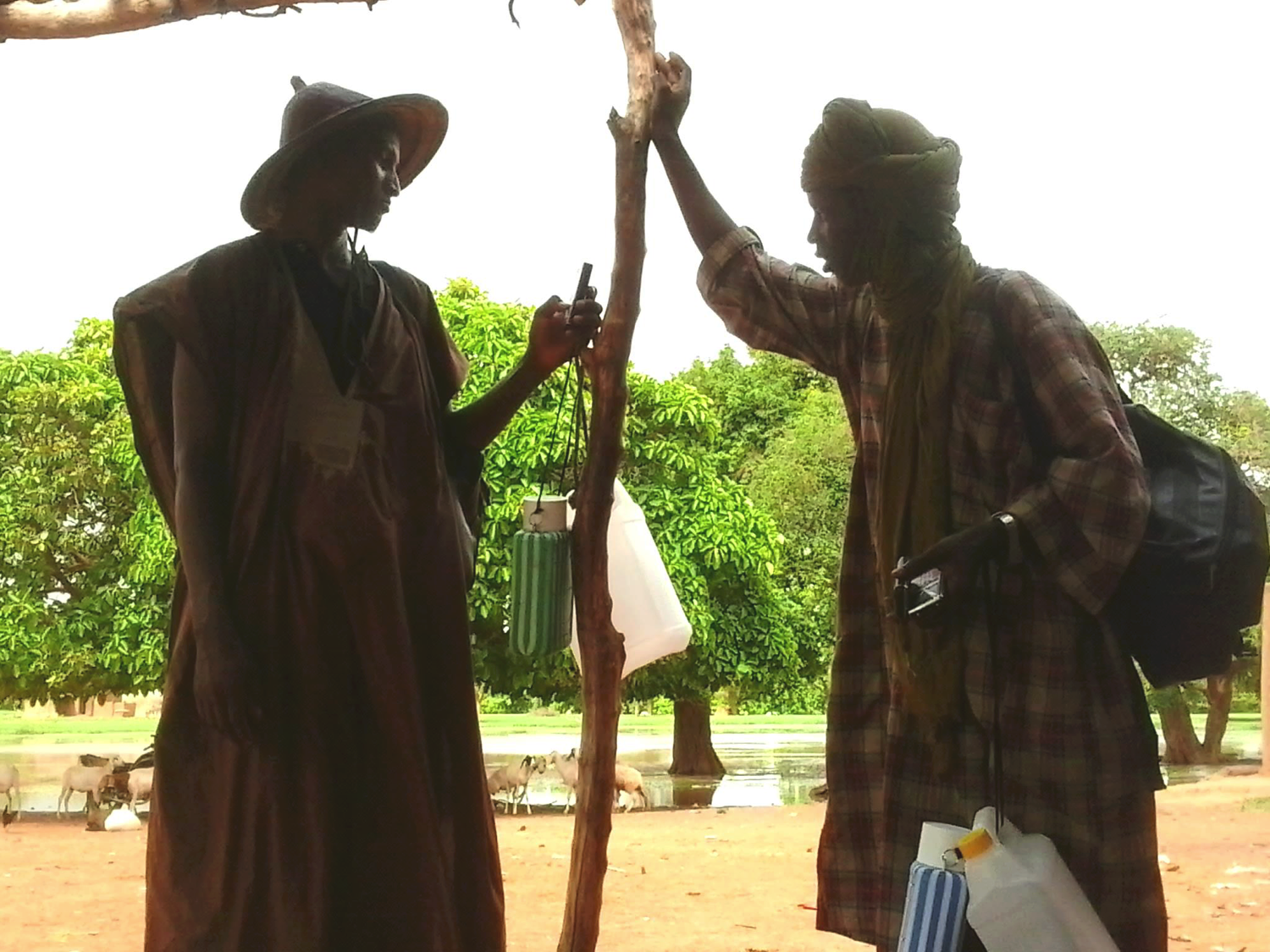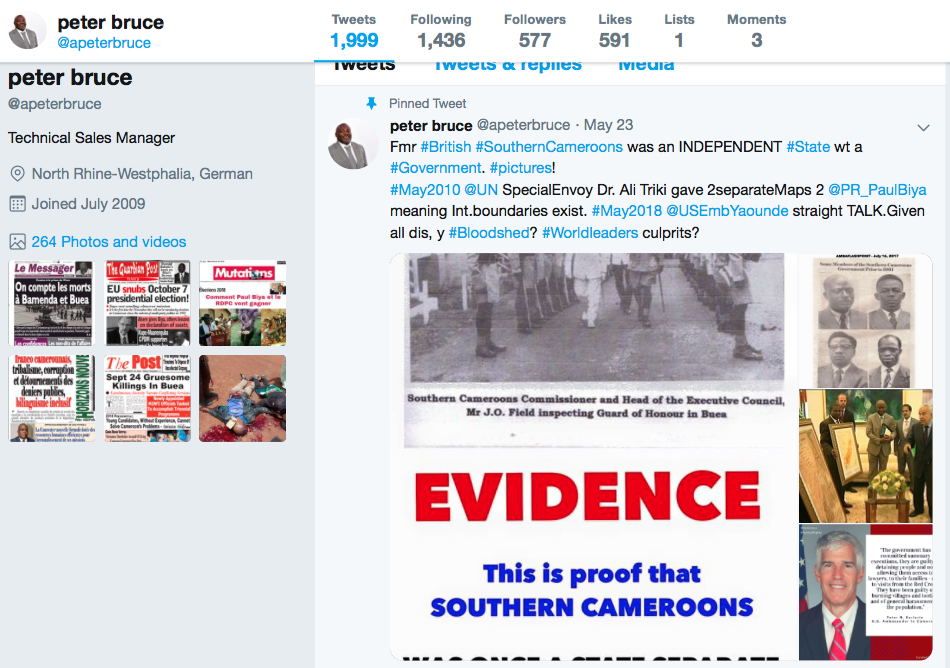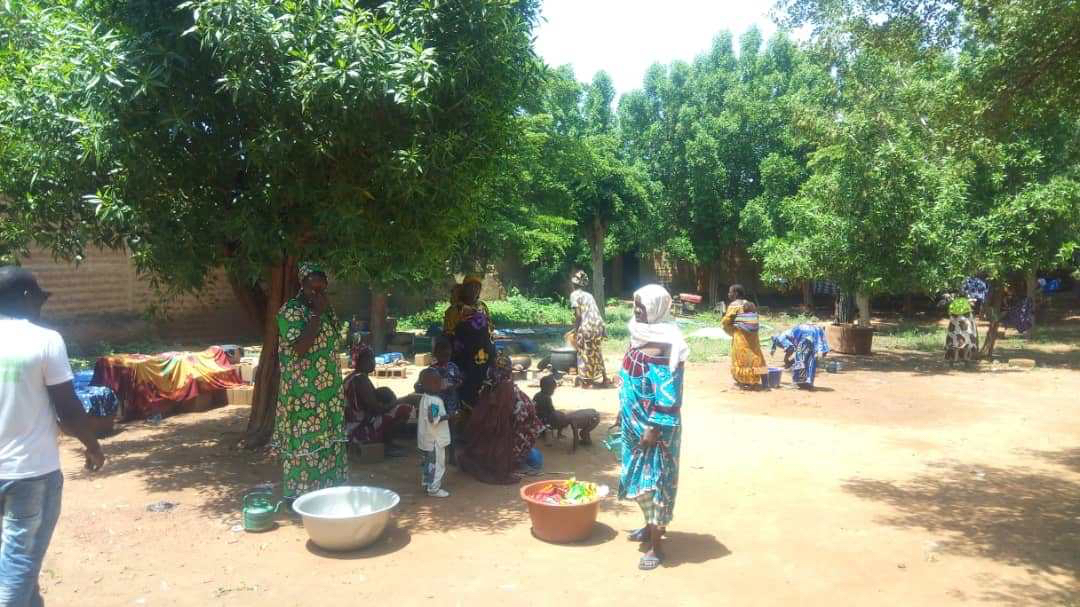Soon after midnight (10/7/23) I received another WhatsApp voice message of ‘Mamadou Fette Sambo’, the name with which I stored his number in my telephone during my last visit to Mali in May. He shares his morning wishes in Fulani style and asks me to bring him a new phone, tecno, on my next visit to Mali. I met Mamadou at the house of the son of my friend Aisata. Aisata was assistant during the fieldwork I did together with Han van Dijk in the Hayre-Seeno, Central Mali in the early 1990ies.[1] Mamadou has a thin, slender body clothed in a long jellaba of fatigued cotton, and his face shows the wrinkles of a life in the bush without luxury. I can imagine him walking with a large cattle herd from the markets in the rural areas to the capital city, where the Fulani cattle serves as the urbanite’s high-quality food. We also met in 1990 when Han and I visited Fette Sambo, a cattle camp part of Serma, and they offered us roasted goat meat. Now in 2023, the 1990ies seem so far away, but lively flash backs come back to me during the meetings I have in Bamako with the people from the region.
Aisata was in Bamako in March 2022, to have cataract surgery. Despite the wish of her son, who is teacher in Bamako, she returned to Boni, a market town in the Hayre-Seeno and 30 kilometers north of Serma in Central Mali, where the Malian army with the help of the Wagner group (Russian mercenaries) have their basis to fight the Jihadi groups who occupy a large part of the region. Since the Wagner group is present in the region violence against civilians has increased. In a report of Human Rights Watch it is explained how violence against civilians has risen in Central Mali since the arrival of the Wagner group and the departure of the French. In the rhetoric of the Malian government they fight a war against terrorists. Who these terrorists are is quite undefined. In central Mali they are associated with Katiba Macina, a Jihadi group that first appeared on the scene as the Macina Liberation Front. The group joined a regional Al Quaida consortium in 2017. In the Hayre-Seeno Katiba Serma dominates the Jihadi scene, covered by Katiba Macina. Katiba Macina is led by Hamadou Kouffa, a famous Muslim singer in the Inner Delta of the Niger, who turned into a gifted preacher for the cause of Katiba Macina. In his preaches he spoke specifically to his Fulani kinsmen, in Fulfulde, the language of the Fulani. The imaginary of Fulani Jihadist was shared in the public sphere. La Question Peule, became a ferocious debate in Mali and continued in social media platforms.[3] In the public discourse especially among people in the South of Mali, the Central Mali terrorists are Fulani. That members of many other ethnic groups have joined the Jihad, is neglected in this public imagery of the terrorists. In the interviews that I had with people who fled the region the stories about these so-called terrorists are diverse. They show diversity both in reasons to adhere to these groups and the (ethnic) affiliation of the adherents. The explanation of Mamadou Fette Sambo is one of these stories.
Dominated by fear
Mamadou arrived in Bamako in May 2023, in search of a safe environment. He fled his camp out of fear. What does this fear (cuusal) mean? He explains that many Fulani men in the Hayre-Seeno are afraid of both the army and their white allies, and the Jihadi-armed groups.
De facto Fette-Sambo, his home camp is controlled by Katiba Serma. He explains that they are the ones who come to collect the Islamic taxes: the Zakat. They also impose the clothing prescriptions: men have to wear beard and short trousers; women have to be veiled; and they impose a lifestyle that forbids cigarettes, forces marriages, does not allow music and dance, and imposes praying in the style of Salafi Islam. Mamadou is a serious smoker, and he has never stopped smoking, but in hiding.
Since January 2022 the Malian army works with the white mercenaries (Russi’en), who visit Fette Sambo now and then. They come to get information about the whereabouts of the Jihadi groups. One day they offered Mamadou cigarettes. They are dangerous, Mamadou continues his story. Once they passed Fette Sambo to go to Yaraama, where a deep well provides water for cattle and households the whole year, and hence people will be there with their cattle. They returned with two men they arrested whom they killed (be kirsi, that is beheaded) close to Fette Sambo.
Mamadou is afraid of being accused by the Jihadi groups of being a traitor, and by the army and their white allies, of being a jihadist/terrorist. In both cases it is death that awaits him. His only option was to leave. He left his young wife and his three young children behind in Fete Sambo. He hopes they will not be attacked. In principle life is not too bad there in terms of food. They had a good millet harvest and there is enough pasture for the animals. But life is dominated by fear.
Serma under jihadi joug
Mamadou does not adhere to the Jihadi groups and their actions or ideology. He does know some of them and the local leader of Katiba Serma, Muusa Hima, visits Fette Sambo regularly. They discuss. He is from Yaraama and now around 50 years old. He also came to warn his uncle (they are family) to no longer smoke, because it is really dangerous. If they would see him smoking punishment would be harsh.
Muusa Hima is one of the few people of Serma part of the armed groups, according to Mamadou. There is another youngster from Fete Sambo who joined them, and indeed the sons of Ahmadou Jigooru also joined. But according to Mamadou many of these young men in Katiba Serma are from other Fulani lineages than those in Serma, or they belong to entirely different ethnic groups. . He mentions Toloobe from Niger, Jelgoobe from Burkina, and also what he calls Boko Haram who come from Nigeria. Humbeebe (a derogatory term for Dogon), Bambara and Sonrai also joined their ranks. He recalls how it all started, when the state abandoned the region in 2012, and MUJAO[3], a Jihadist group occupied the region. Then the Fulani felt obliged to take control in their own hands as the region became very insecure. Young Fulani men bought arms and joined MUJAO camps to learn how to fight. They returned and formed self-defense groups. In 2015, as Mamoudou remembers, a big gathering, the Battu Mawdu took place in Serma to discuss the insecurity and absence of the State in the Hayre. He attended the meeting. They had hoped to get help to restore calm in the region, but in fact nothing happened. Of the young men who were trained by MUJAO some continued their fight with groups affiliated with the Jihadists. Katiba Serma’s existence was first mentioned in reports and in the media in 2018. They are a group that also incorporates the earlier self-defense initiatives in the Hayre. Mamadou does not really understand their adherence to the extreme Muslim ideology. He saw these young men join MUJAO and later other armed groups in exchange for money, bravery, and probably ideology. He does not believe in the true Islam. He explains that religion is between the individual and Allah, and also if you pray or not is your own responsibility. Later in a group interview he and his comrades who also fled the region, say that praying is for the poor, when you are rich in cattle you have no time for such things.
Travel
It is not the first time that Mamoudou travels. Also, when he was young, he traveled. He has been in many countries of West Africa, in search for work and money. He moved cattle to big cities, even to Conakry at the Guinean coast; and he worked in different gold mines. He explains how he went into the tunnels to dig for gold. That is also why he did not start a family earlier. He was not stable (like many Fulani men). His brothers took care of the cattle in Fette Sambo, while he was on adventure. He divorced 4 times and had no children until he married his present wife (about ten years ago). They have three young children. She is a daughter of the sister of his mother, a bibbe yaaya, the closest family tied marriage that the endogamic cattle Fulani practice (these are the social category egga hodaabe, those who keep cattle in the bush and are nomadic). He also came regularly to Bamako, during the dry season, where he worked in the farm of a Minister Dicko who is from his region and from the sedentary elites of the Fulani who often hire cattle Fulani for their cattle farms. The now abandoned farm in the outskirts of Bamako, is their accomodation. now The housekeeper, though of an empty and dilapidated farm, is a Dimaajo, a social category in Fulani society composed of former slaves, from Beebi (a village close to Boni and Serma). His home is open for his brothers who fled the region and with whom he worked on the farm in better times. The travel that Mamoudou undertook this time is different from that in the past. In the past, he was free to return and bring money home, to buy cattle. Now he is not free to return, and he only finds very occasionally a chance to work. To take the road the Bamako women can still take the bus, taking nevertheless the risk of landmines and attacks of armed groups. As a man Mamadou could not take this option. The risk to be arrested and killed, either by the Jihadi groups or the Army is too big. He had to take a dangerous road to bypass the Jihadi, Fama/Russi patrols, and patrols of milices affiliated with Dogon and against Fulani (who control parts of the Seeno and Douentza). The long route is via Toula, to the north of the Gandamia, they do not cross Douentza. They are taken on the back on motorcycles, for which they pay excessive prices, up to 5000 FCFA for one turn. The road is only becoming more perilous.
Mi cuusi
Here in Bamako, he has not yet a good income. He hangs around on the cattle market in the outskirts of Bamako. If calm returns, I will go back, so he says, but now I cannot, mi cuusi (I am scared). He is planning to get his wife and three young children over to Bamako. His cattle may follow, like the cattle of many Fulani from Serma who are no longer able to cope with the situation and are thinking of changing to a life in the south of Mali.
The first WhatsApp message from Mamoudou Fette Sambo dates from 28th of May. This audio tells me, hearing to the explanation by a male voice at the background, that it is the first time he uses voice messages in WhatsApp. He sounds disappointed about not receiving my answer immediately. During our exchanges in Bamako, he told me that he is member of WhatsApp groups that give him information about what happens in Serma. And he also makes regular calls with his family in Fette Sambo if they are connected. Being connected in the camps is difficult, the more so since the Orange network no longer works and Malitel does not have a strong signal in the region. The men with whom he shares the house in Bamako do have their smartphones and are all connected. They exchange on the latest disappearances and killings in the region reported in their WhatsApp groups. They repeat again and again that it is fear that made them leave and they realize that this may be their last travel.
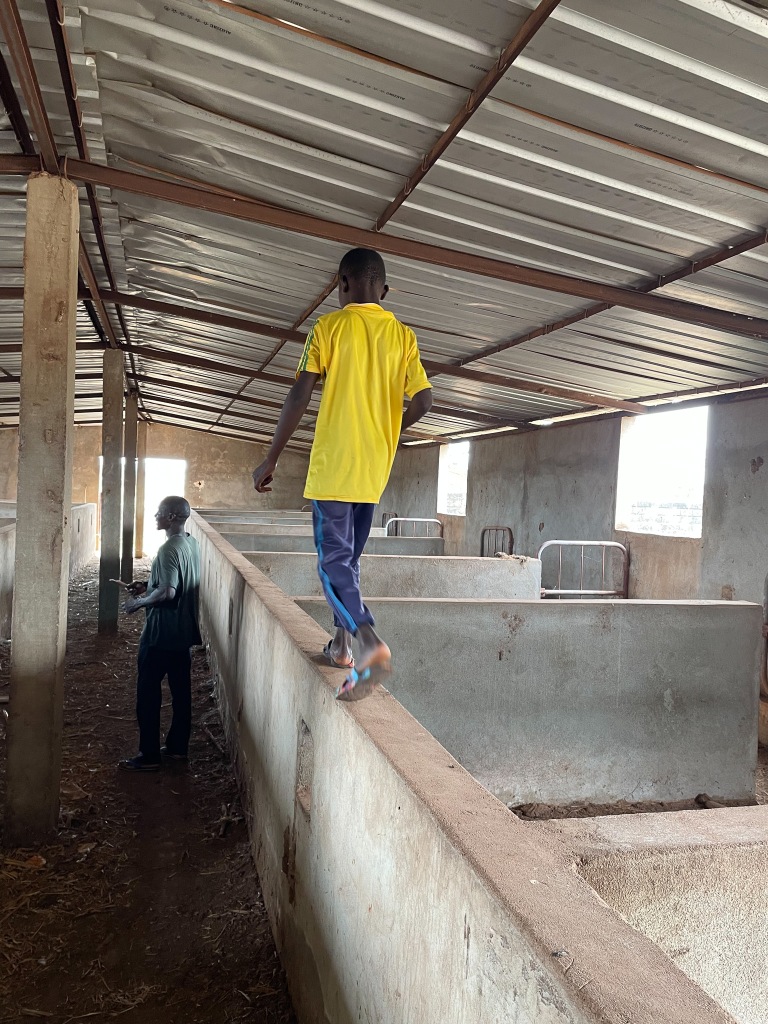
Footnotes
[1] This two-year fieldwork in 1991 and 1992 resulted in the PhD dissertation, published as a book: Arid Ways; We returned regularly to the region until the conflict started in 2012. (De Bruijn and Van Dijk 1995) Bruijn, Mirjam de, and Han van Dijk. 1995. Arid Ways: Cultural Understandings of Insecurity in Fulbe Society, Central Mali. Amsterdam: Thela Publishers.
[2] The journaliste Thiam introduced the debate with his book entitled ‘Centre du Mali: Enjeux et dangers d’une crise négligée’ (2017, HD), voir aussi la video: https://hdcentre.org/fr/actualit%C3%A9s/nouvelle-publication-centre-du-mali-enjeux-et-dangers-dune-crise-negligee/. The discussion has been adopted in the public debate. See also Sangare, Boukary. 2019. “Central Mali: Toward a Fulani Question?” In: Biographies of Radicalization, Red. Mirjam de Bruijn, 174–93. De Gruyter Oldenbourg. https://doi.org/10.1515/9783110623628-012.
[3] Movement for Oneness and Jihad in West Africa

